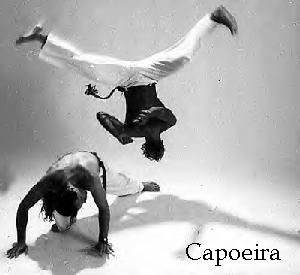Every so often when people watch me dance, they get the idea from the way I move that I know at least one form of martial art, and possibly more. One person even came up to me after I left the dance floor at one point and named off no less than seven different forms that he thought I’d had some amount of experience in. As flattering as this was, it amused me, as the extent of my martial arts training so far is a few weeks of karate when I was in my pre-teens.
Still, I like the movements that I see, and have likely incorporated them into how I move when I’m dancing, so it’s not terribly surprising to get comments like that, even if it does make me laugh. I’ve been interested in exploring some form of martial art for quite a few years now, though I’ve yet to have the available time to take classes — having worked swings/nights for around a decade now, I’m usually earning my pay when classes are going on.
Over the years, there have been two martial art forms that have caught my interest, and it was more than a little amusing to see both of them pop up tonight in my daily reads.
First came yet another in the never-ending stream of silly ‘net quizzes: What Martial Art Style Calls to You?

Capoeira is your Way. An African-Brazillian form developed by slaves, Capoeira is a rhythmic, aggresive style known for its dance-like forms and unpredictability.
What Martial Arts Style Calls to You?\
brought to you by Quizilla
I’ve been fascinated with Capoeira for years, likely dating back to the mid-90’s when one roommate or another brought home Only the Strong, which would be your basic cheesy martial arts flick except that it chose to use Capoeira as its signature style.
Originating in Brazil, Capoeira came about when the ruling classes at the time forbade their slaves to practice any form of fighting. To get around the restriction, the fighting style developed from and was incorporated into the slaves’ dancing, resulting in an absolutely beautiful combination of dance and fighting skill. It’s a truly amazing thing to watch if you ever get the chance.
Later on, I read that DeAnna stopped by last weekend’s Asian festival in Seattle’s International district, where she got to witness demonstrations by the Chinese Wushu and Tai Chi academy. Tai Chi is the other of the two styles that I’ve been interested in learnings, and as it turns out, the academy isn’t terribly far away from my apartment. While I don’t currently have evenings free, with any luck that will be changing in the near future, and I just might actually be able to pursue one of the many interests that have been rattling around in my head for quite a few years now.
iTunes: “Tschirm Tschikwirk” by Bigod 20 from the album On the Run (1992, 5:23).
